What I Buy and Why
Bibliophile Pom Harrington on His Original Roald Dahl Book Illustration, and the Accessible Beauty of Picasso’s Prints
His art collection encompasses rare book illustrations, works on paper, and limited-edition prints.
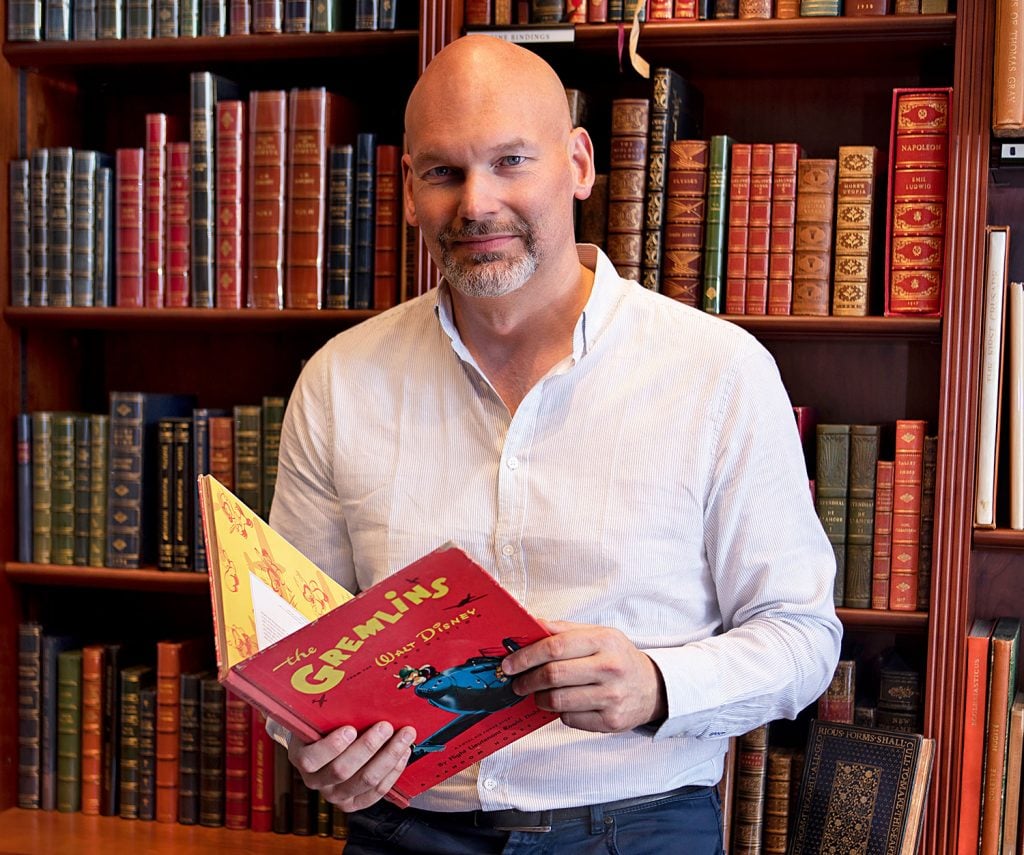
His art collection encompasses rare book illustrations, works on paper, and limited-edition prints.

Lee Carter

Pom Harrington was weaned on books. His father, Peter Harrington, launched the family’s first literary enterprise with a humble stall in London’s Chelsea Antiques Market back in 1969. Three decades later, the younger Harrington carried on the family tradition by founding the first Peter Harrington rare book store in Chelsea, then another in Mayfair. What began as a modest family affair has burgeoned into one of the largest rare book and antiquarian retailers in the U.K. and all of Europe.
As a collector, Pom Harrington has a natural affinity for the world of books, particularly the illustrated kind. He’s especially fond of renowned illustrator Quentin Blake, whose playful art graces the pages of the beloved children’s books of Roald Dahl. Blake also created the illustration for the frontispiece of a Beatrix Potter book that Harrington recently acquired from a charity auction.
Harrington’s passion for books has also spawned an interest in art. His art collection boasts works by such luminaries as Arthur Gordon, Glenn Brown, Michael Chandler, and South African artist Natalie Poole. Among his treasures is a David Hockney print from the 1970s.
Ever the bibliophile, Harrington regularly hits the road with his bookish finds. In April, he’ll showcase his latest discoveries at New York’s Antiquarian Book Fair at the Park Avenue Armory. Along with original illustrations from classic children’s books by E.H. Shepard, Kay Nielsen, and Arthur Rackham, he plans to exhibit two handmade cards by Abstract Expressionist Ad Reinhardt during his student days in the 1930s, as well as a limited-edition book of poetry by French-Mexican Surrealist Alice Rahon. Illustrated by the celebrated Spanish artist Joan Miró, the book was inscribed to Peggy Guggenheim, who supported Rahon’s early forays into painting.
We caught up with Pom Harrington for a read of his art collection.
What was your first purchase?
The first painting I bought was an oil on canvas by Arthur Gordon, an English artist known for his river scenes, and I paid £2,700 ($3,300). The painting is called Putney Bridge with St. Mary’s Church (1894), which is close to where I live. It depicts the new Putney Bridge, which was built in the 1880s and replaced an earlier bridge that connected the two riverbanks between Fulham and Putney. I also have a Whistler etching of Old Putney Bridge, made just before it was taken down, and they both currently hang in my home.
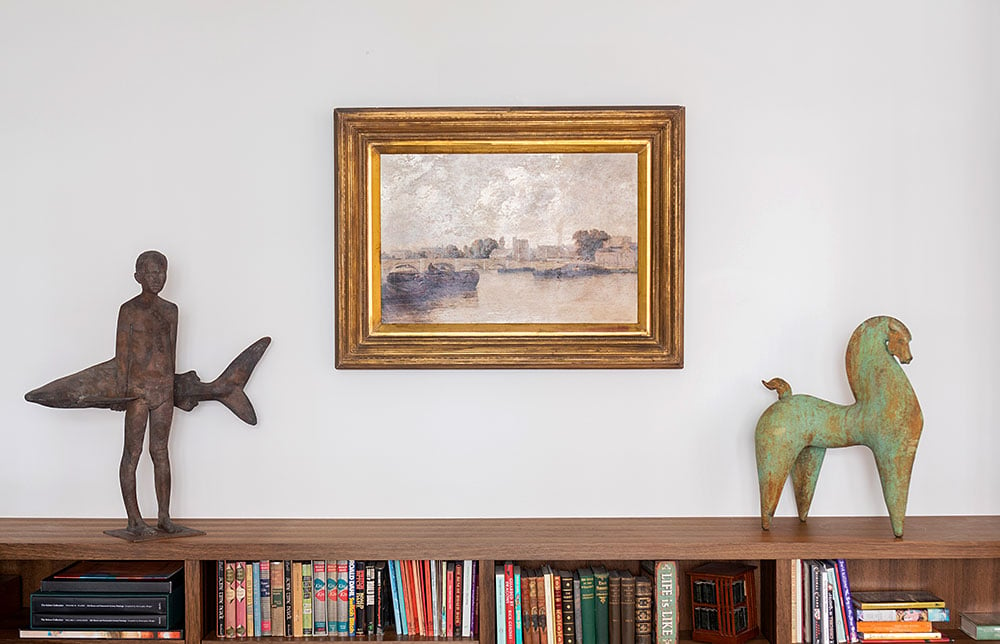
Arthur Gordon, Putney Bridge with St. Mary’s Church (1894). Courtesy of Pom Harrington.
What was your most recent purchase?
I have a collection of prints from Quentin Blake’s “Anthology of Readers” series currently hanging in my stairwell. The original pen, ink, and watercolor drawings from which these limited-edition prints were made focus on people enjoying the act of reading books. Blake is the illustrator synonymous with books written by Roald Dahl—I personally collect inscribed first editions of Dahl—and I guess that aspect, as well as the subject matter and quirky poses and postures appealed to me.
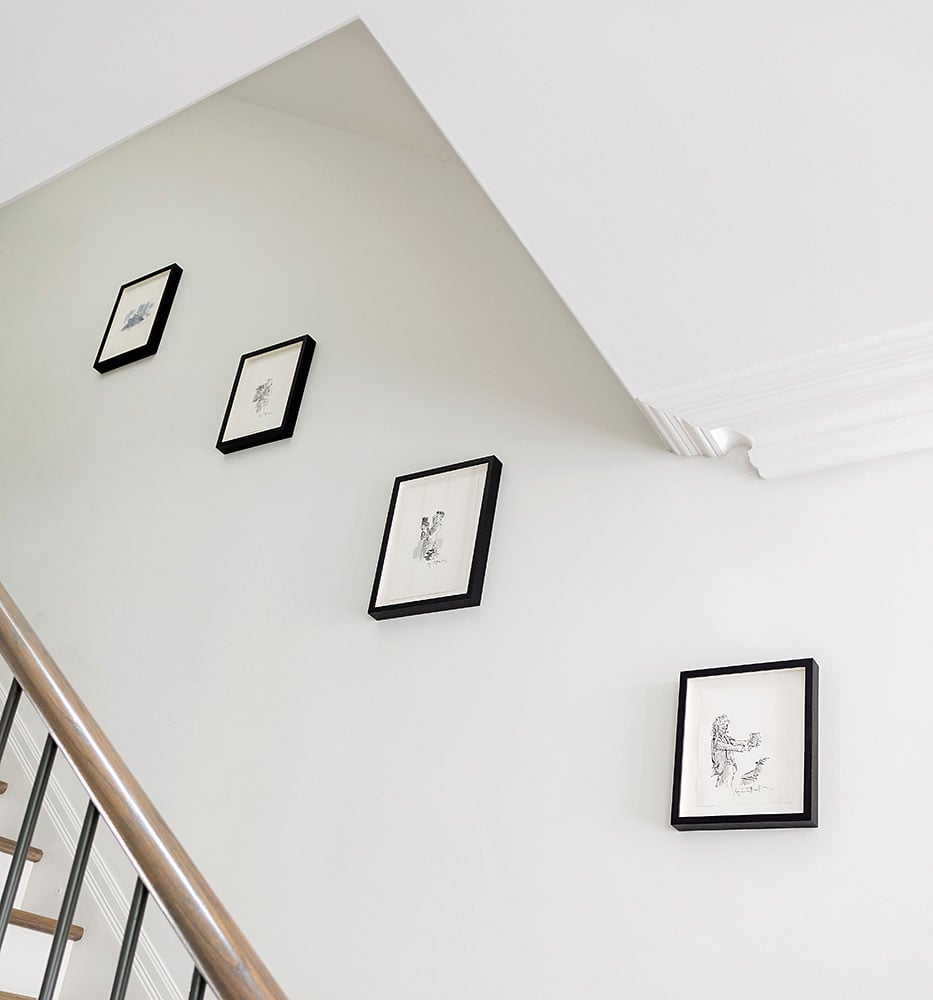
Quentin Blake, “Anthology of Readers” series. Courtesy of Pom Harrington.
Which works or artists are you hoping to add to your collection this year?
I would like a Picasso. I have always liked the linocuts—they are very distinctively and identifiably in his style and signed linocuts maintain their collectibility. They are also still relatively rare within his repertoire, while being much more achievable in terms of affordability. I have always liked them.
What is the most expensive work of art you own?
I believe it is an unused original illustration from The Enormous Crocodile by Roald Dahl, which was the first book that Dahl collaborated on with Quentin Blake as the illustrator. This proved to be a hugely successful collaboration that played a big role in the popularity of the books. Dahl and Blake’s relationship mirrored that of A. A. Milne and E. H. Shepard [of the Winnie-the-Pooh book series] in terms of making his books household names. Most of the original artwork by Blake for Dahl is very difficult to get hold of, locked away in private and museum collections. But this piece—which was an unused variation of the opening illustration of the book—came up for auction and really appealed to me. I think I paid just over £13,000 ($15,900). I stuck my hand up until I walked away with it.

Quentin Blake, unused illustration from the book The Enormous Crocodile by Roald Dahl. Courtesy of Pom Harrington.
Where do you buy art most frequently?
I buy art as I see it—mainly at auction but sometimes privately. I sometimes tend to pick stuff up at book fairs if a piece catches my eye. I do like art with a local connection such as the Putney Bridge pieces mentioned earlier, but my taste also veers toward the eclectic.
I have a print by the South African artist Michael Chandler called My True Love. The artist describes it as a bit of a love letter to Cape Town, which is where I happen to own a second home with my partner and spend a fair amount of time. The artist often personalizes the piece with details that are meaningful to the buyer, and my print has an illustration of my family at the top of Table Mountain.
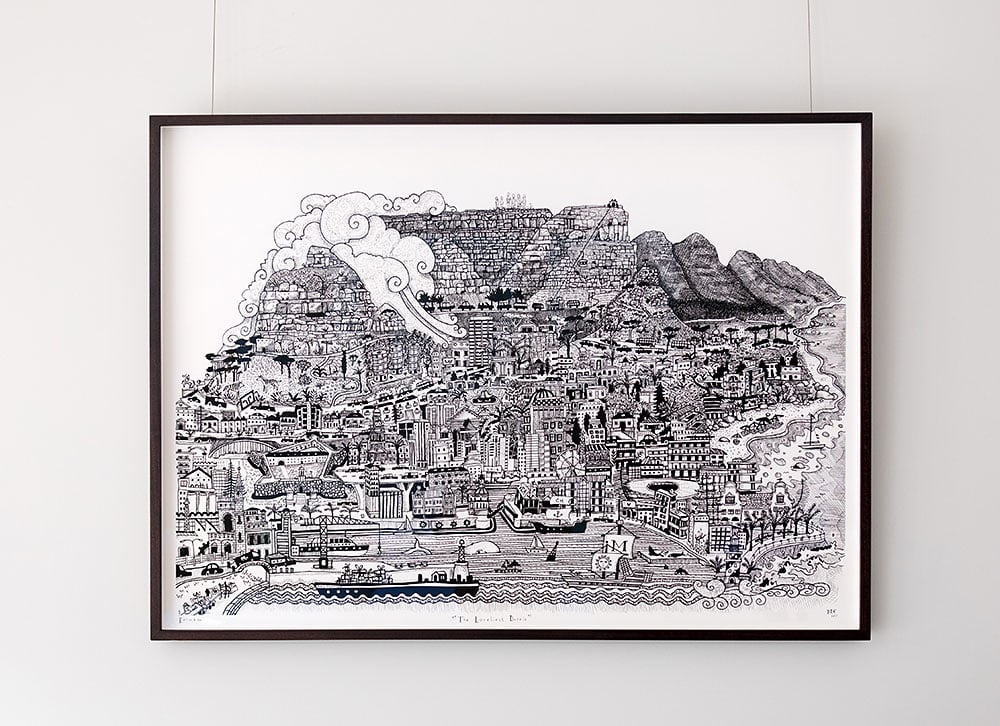
Michael Chandler, My True Love. Courtesy of Pom Harrington.
Is there a work you regret purchasing?
I bought a large canvas of Mickey Mouse executed by Disney artists for a Disney company director sometime in the 1990s. I was instinctively drawn to it, but I have to admit, what looked amazing in California somehow didn’t look quite right when it came back to my Victorian house in London! I stuck it in the window at the store and someone bought it, so that worked out in the end.
What work do you have hanging above your sofa?
I have a triplicate of prints by Glenn Brown from the series “Half-Life” (after Rembrandt) hanging above my sofa. They are very modernist and Brown is known for reinterpreting works by historical artists—in this case Old Master etchings of faces, restyled in a very contemporary manner. I think they are very striking and very cleverly done.
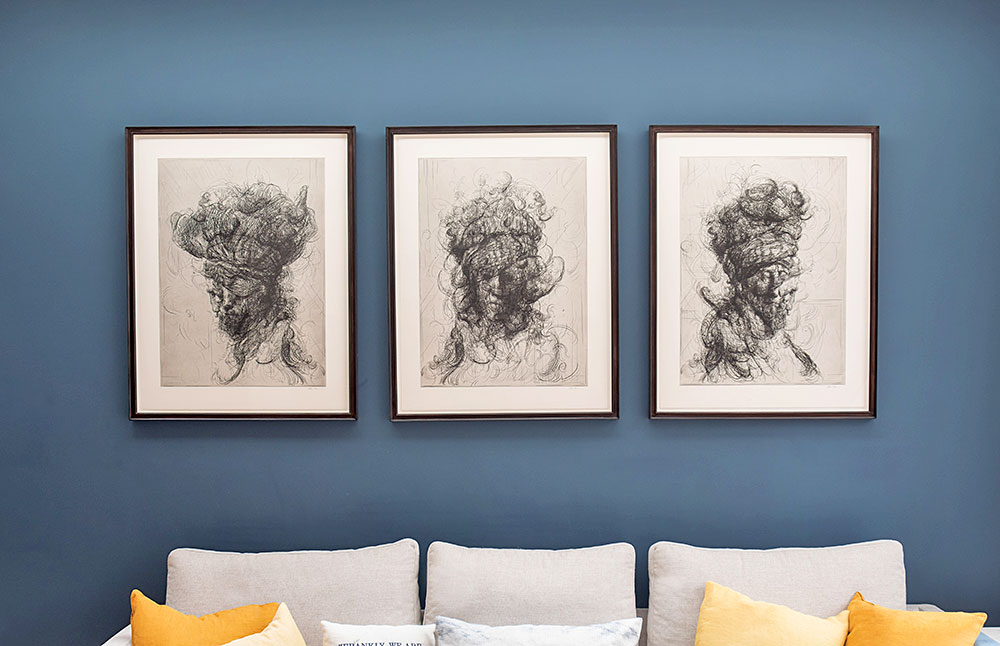
Glenn Brown, from his “Half-Life” (after Rembrandt) series. Courtesy of Pom Harrington.
What is the most impractical work of art you own?
I bought an interesting piece screened in concrete from South African artist Natalie Poole. The medium is scored and then painted on. It weighs a ton and is difficult to move around. It took a while to figure out how I could hang it—but there it is!
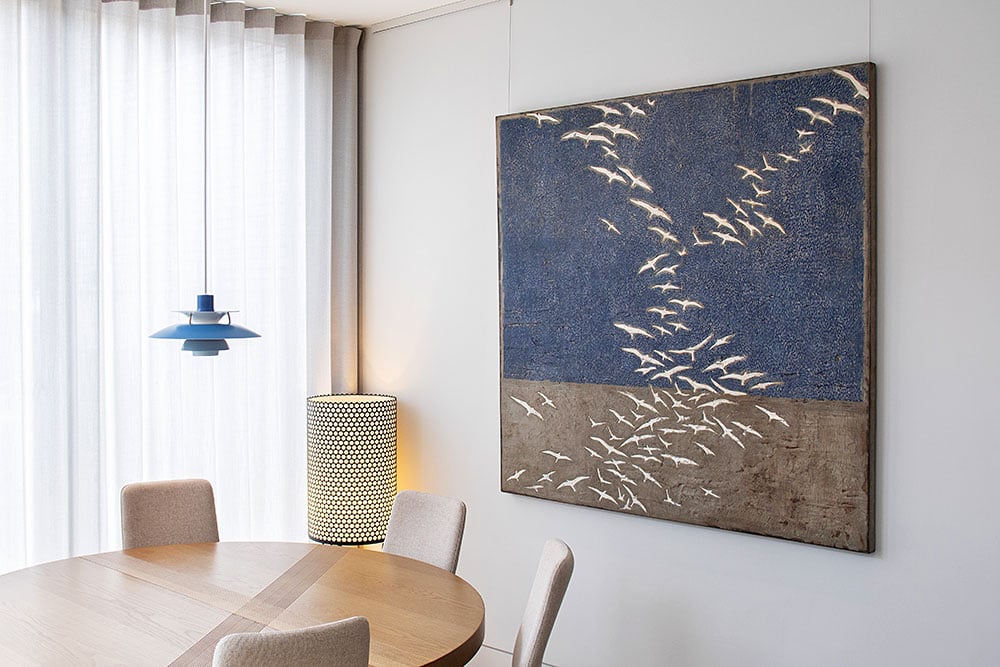
Natalie Poole’s concrete art. Courtesy of Pom Harrington.
What work do you wish you had bought when you had the chance?
I would have loved to own a L. S. Lowry. They are of a certain age and I’m still chasing one. Around 20–25 years ago they were still in the realm of the tens of thousands, but I guess the moment has now passed.
If you could steal one work of art without getting caught, what would it be?
It would be one of the Klimts at the Belvedere in Vienna. I think they are just stunning.